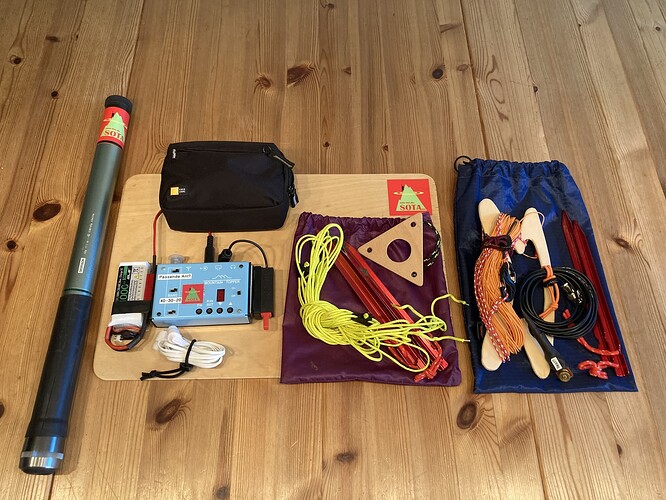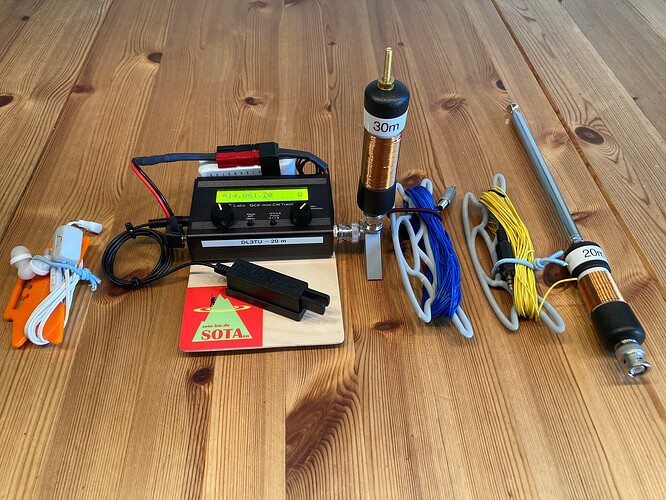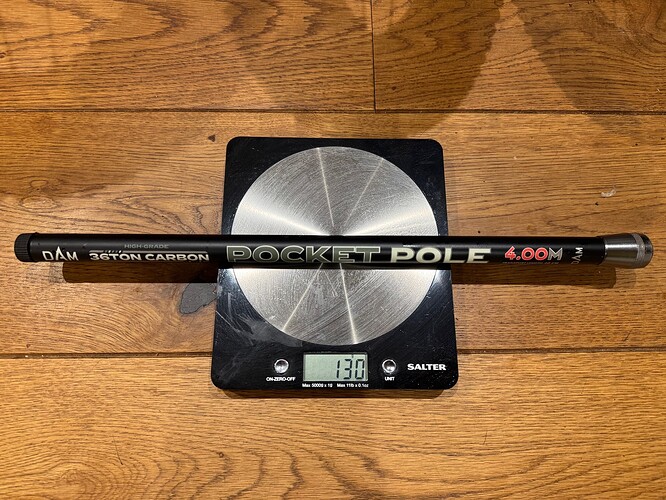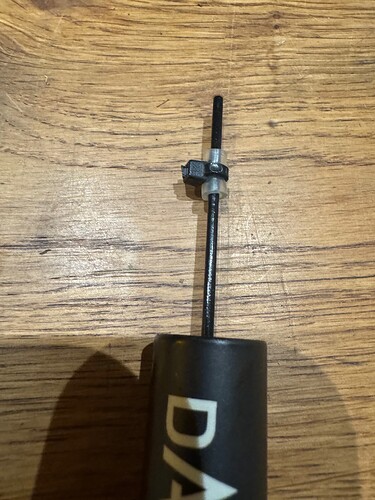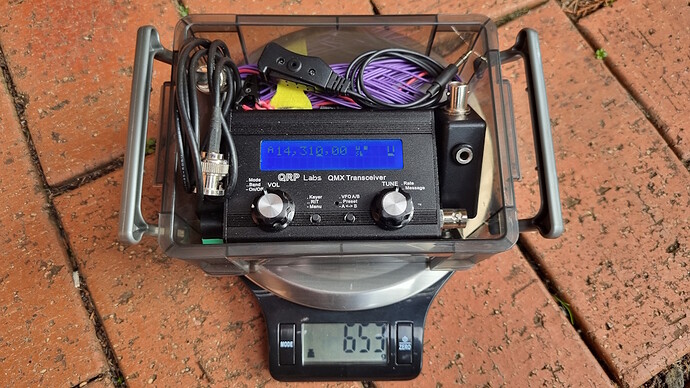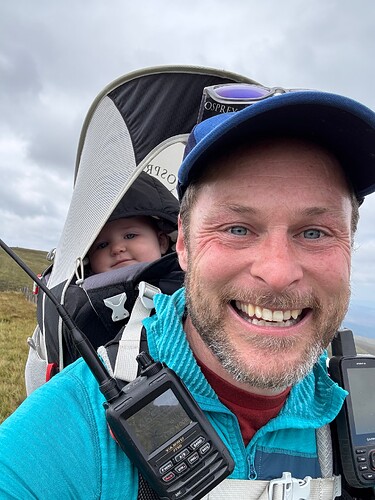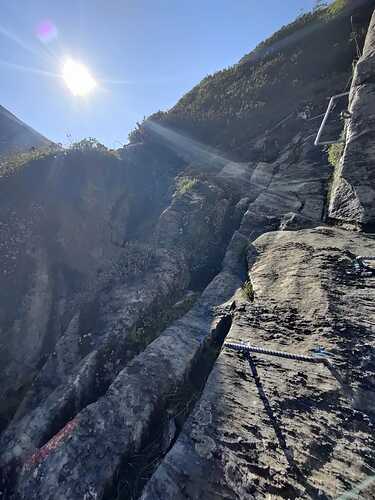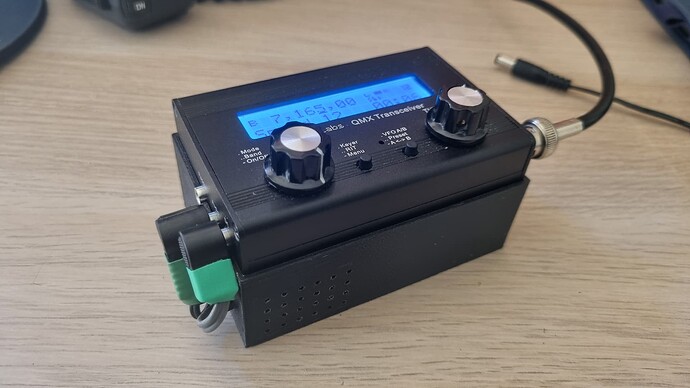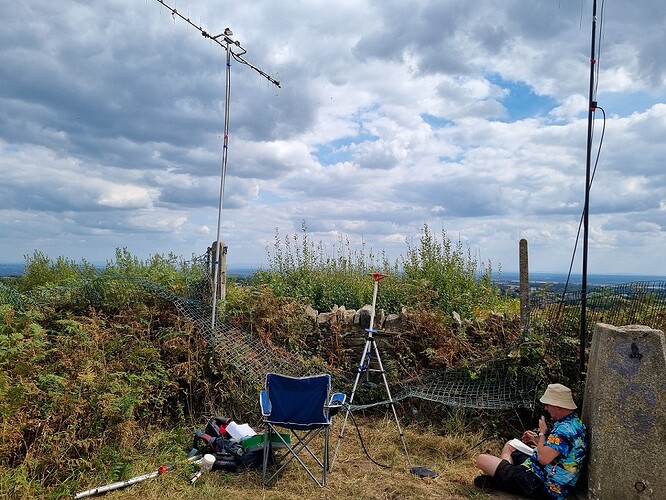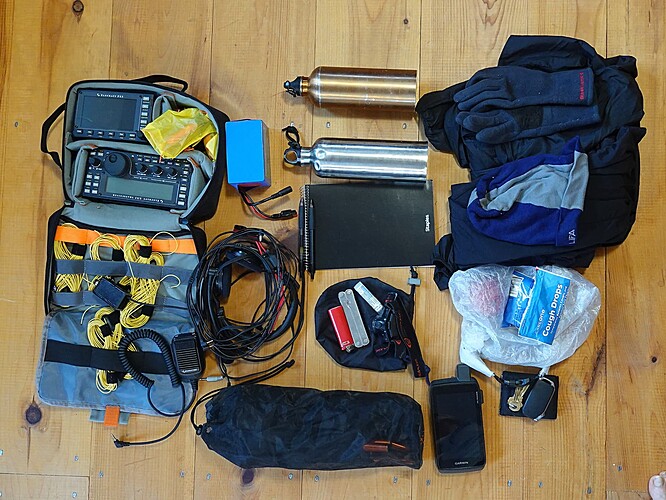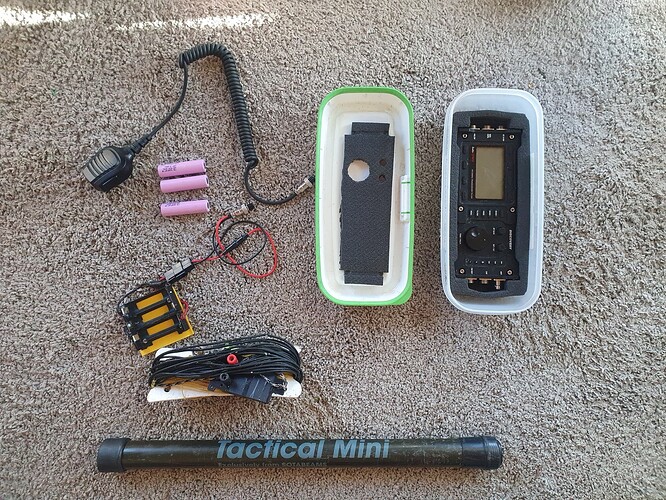I can at least add some levity to the thread… And perhaps some hope for newcomers.
After my first SOTA activation earlier this year, I weighed everything in my backpack. Which was a full-sized frame pack, but without a sleeping bag attached to it. I figured there might be some room for improvement, but I was using what I had on hand.
K2 transceiver 1519g (includes SSB, but not internal tuner, battery, or amplifier)
DC cables for K2 103g
microphone for K2 167g (some day I’ll figure out what it is for)
stenographer’s notebook 164g
pens / pencils 9g
HT 437g
spare HT battery pack and remote mic 454g
2m 1/4 wave whip for HT 27g
2m wire collinear vertical antenna 120g (possibly 2 dB gain over a flower pot?)
antenna kit (coax, dipoles, and vertical wires for 40 - 10m) 633g
another dipole antenna kit for 20/40m 447g (using 75 ohm coax)
80m dipole wires 107g
17m dipole wires 94g
12m dipole wires 31g
15m full wave loop wire 93g
throwing rope / weight / bag 273g
antenna analyzer 717g
coax switch and adaptors 567g (for antenna comparisons - need to build one with BNC connectors)
foam seat pad 125g
J-38 straight key 273g
plastic paddles 34g (small and light, but not a good action)
cable for paddles 54g (with ferrites on it)
earphones and spare 55g
BNC patch cable 52g
RG-174 patch cable 50g
RG-58 patch cable 4.5m long 144g
BNC to wire adaptor 29g
bag of ropes 694g (>200m?)
another 30m rope 79g
5Ah lead gel battery 1632g (too small for K2 current draw)
tool bag 420g
spare wire 65g
4m sectional glassfibre spreader for 15m loop 286g
10m rectangle loop 570g (need to find lighter spreaders)
Total weight with other equipment and water, about 15kg.
All that, and I managed 1 QSO: a 11,000km S2S to New Zealand on 10m. But K7KER made a number of contacts using the 2m vertical and the 40/20m dipoles, and said they worked pretty well. I had hoped to set up multiple antennas and compare them, but didn’t get a chance.
I have other options: a YouKits EK1A for 20/30/40m that is much lighter and CW-only, and a 40m monobander, but I wanted to try 10m as it looked like it would be open. If I need more power, perhaps for a trans-oceanic event, I have an old Ten-Tec Argosy (analogue) that runs 25 - 50 watts output, and a couple of 30aH LiFePO4 batteries (3734g). Both the K2 and the EK1A have room for internal batteries.
I’ve already made some improvements: Bulldog paddles (63g including cable) that clamp on the side of my clipboard; shorter ropes included in each dipole kit; yet another (even smaller) dipole kit (sometimes I want to put up two antennas for the same band and compare them); and a smaller backpack (29 liter?) once I get the straps resewn.
Then, of course, I have more antennas to try out, generally by setting them up along with a dipole and comparing signal strengths.
Obviously, the first place to save weight is the rig and the battery, but as long as 10m, 15, or 17m may be open, I’ll probably stick with the K2. But at this point, I’m not making long jaunts to difficult summits, and the equipment suits my operating interests. I may look at purchasing equipment specifically for SOTA in the future, but for now I’m having fun with a minimal investment.



